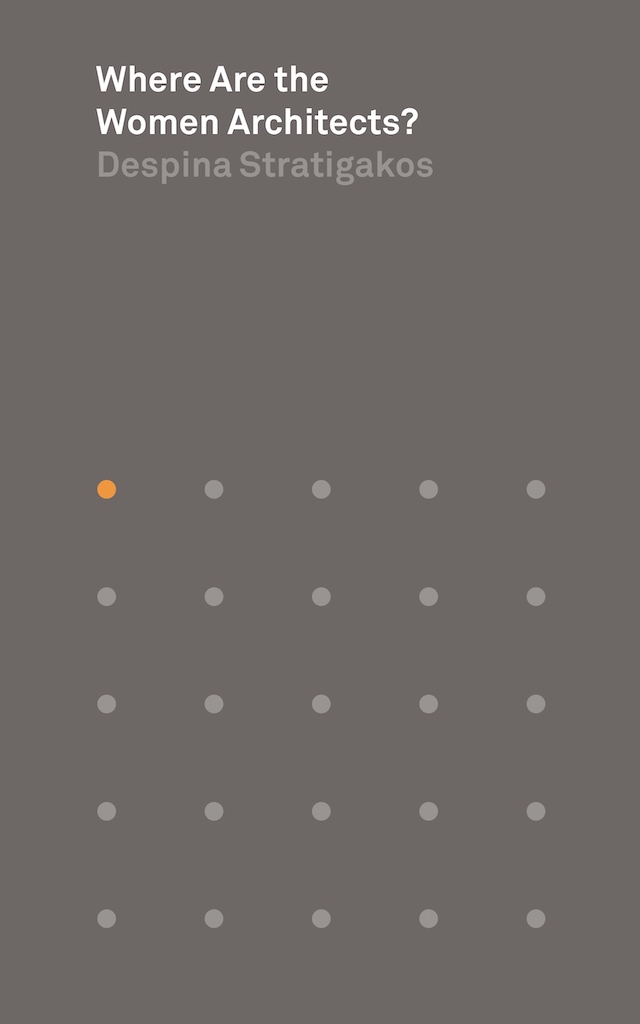Where Are the Women Architects?
Where Are the Women Architects?by Despina StratigakosPrinceton University Press, April 2016Paperback | 5 x 8 inches | 128 pages | 15 illustrations | English | ISBN: 9780691170138 | $19.95PUBLISHER'S DESCRIPTION:For a century and a half, women have been proving their passion and talent for building and, in recent decades, their enrollment in architecture schools has soared. Yet the number of women working as architects remains stubbornly low, and the higher one looks in the profession, the scarcer women become. Law and medicine, two equally demanding and traditionally male professions, have been much more successful in retaining and integrating women. So why do women still struggle to keep a toehold in architecture? Where Are the Women Architects? tells the story of women’s stagnating numbers in a profession that remains a male citadel, and explores how a new generation of activists is fighting back, grabbing headlines, and building coalitions that promise to bring about change.Despina Stratigakos’s provocative examination of the past, current, and potential future roles of women in the profession begins with the backstory, revealing how the field has dodged the question of women’s absence since the nineteenth century. It then turns to the status of women in architecture today, and the serious, entrenched hurdles they face. But the story isn’t without hope, and the book documents the rise of new advocates who are challenging the profession’s boys’ club, from its male-dominated elite prizes to the erasure of women architects from Wikipedia. These advocates include Stratigakos herself and here she also tells the story of her involvement in the controversial creation of Architect Barbie.Despina Stratigakos is associate professor and interim chair of architecture at the University at Buffalo, State University of New York. She is the author of Hitler at Home and A Woman's Berlin: Building the Modern City.REFERRAL LINKS: dDAB COMMENTARY:Where Are the Women Architects? is the first book in the Places Books series organized by Places Journal. The second, Shannon Mattern's A City Is Not a Computer: Other Urban Intelligences was recently published and reviewed on this blog a couple of days ago. Just as the title of Mattern's book references an older text (Christopher Alexander's "A City Is Not a Tree"), likewise Despina Stratigakos’s book echoes a similar question asked about women artists in 1971. Not coincidentally, a number of articles, publications, and exhibitions were made starting in the early 1970s, all fighting against discrimination against women in the architectural profession. These include: a resolution on the "Status of Women in the Architectural Profession" at the 1973 AIA Convention (it passed); the founding of the Organization of Women Architects, Chicago Women in Architecture, and the Alliance of Women in Architecture; the founding of the Women's School of Planning and Architecture (it lasted from 1975 to 1981); the holding of the Women in Architecture Conference at Washington University in St. Louis in 1974; and the 1977 book/exhibition Women in Architecture: A Historic and Contemporary Perspective.These publications and events are found in the first chapter Stratigakos’s book, "May Women Practice Architecture? The First Century of Debate," expressing what the author calls a "second wave of feminism in architecture." That wave followed many decades after the first wave that happened around the turn of the century and it segued into the current third wave that is most prominently marked by the petition to give Denise Scott Brown a retroactive Pritzker Prize. The petition to "recognize Denise Scott Brown for her work in Robert Venturi's 1991 Prize" was organized by Arielle Assouline-Lichten and Caroline James in the spring of 2013 and is profiled in the fourth of the book's five chapters, "Architecture Prizes and the Boys' Club." The other three chapters are "The Sad State of Gender Equity in the Architectural Profession" (that "sad state" led me to survey some women architects in 2015 for World-Architects), "What I Learned from Architect Barbie," and "Unforgetting Women Architects: A Confrontation with History and Wikipedia."The last two chapters mentioned above were originally published on Places (here and here) and are standouts in the book; they tackle the issues confronted by the whole book (discrimination, pay equity, collaboration, etc.), but in a way that is unexpected and, especially in regards to Wikipedia, expresses how discrimination is prevalent in places that are often seen as unbiased. Those chapters were fleshed out with three new chapters to make a slim, readable, highly relevant (still) book that all architects — men and women — should read. Naively, I'd like to think that the issues confronted by Stratigakos have been dealt with by the profession thoroughly over the last five years, but architecture remains a boys' club — and a white one at that — when it comes to licensure, firm

by Despina Stratigakos
Princeton University Press, April 2016
Paperback | 5 x 8 inches | 128 pages | 15 illustrations | English | ISBN: 9780691170138 | $19.95
PUBLISHER'S DESCRIPTION:
REFERRAL LINKS:





